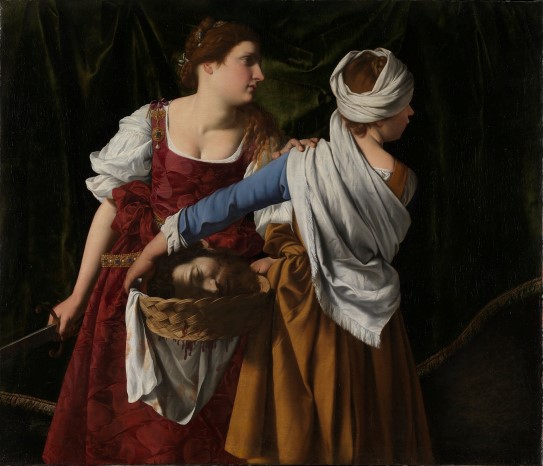Judith and her Maidservant with the Head of Holofernes(2)
Orazio Gentileschi
Transcription
Narrator
It is night in the Assyrian camp.
The army’s commander, Holofernes, is no longer asleep after too much wine.
He is also no longer lusting after Judith, a Jewish widow from Bethulia, a city he has conquered.
Holofernes’s sword is in Judith’s hand.
Holofernes’s head is in her maidservant Abra’s basket.
There are soldiers outside in the night.
Wait, not a sound.
Not yet.
The night’s dangers and the night’s possibilities.
Can the women silently move the tent canvas aside, leave Holofernes’s headless body behind, and disappear with the basket into the night, towards their home town?
The serving woman’s blue sleeve, painted with precious lapis lazuli
Judith’s blood-red dress, the commander’s ashen face.
The contrast between light and shadow, the dimness of Orazio’s painting, a technique known as chiaroscuro: the women in warm light, everything else in the darkness.
Where will it end?
Capturing a moment in a larger story, right before the crescendo, was a deliberate narrative technique for artists in this period.
We get an insight into what has just happened, and we can imagine what is about to happen:
Holofernes’s head will be put on a stake outside the city.
Judith will be celebrated for her courage and strength, as a liberator and heroine.